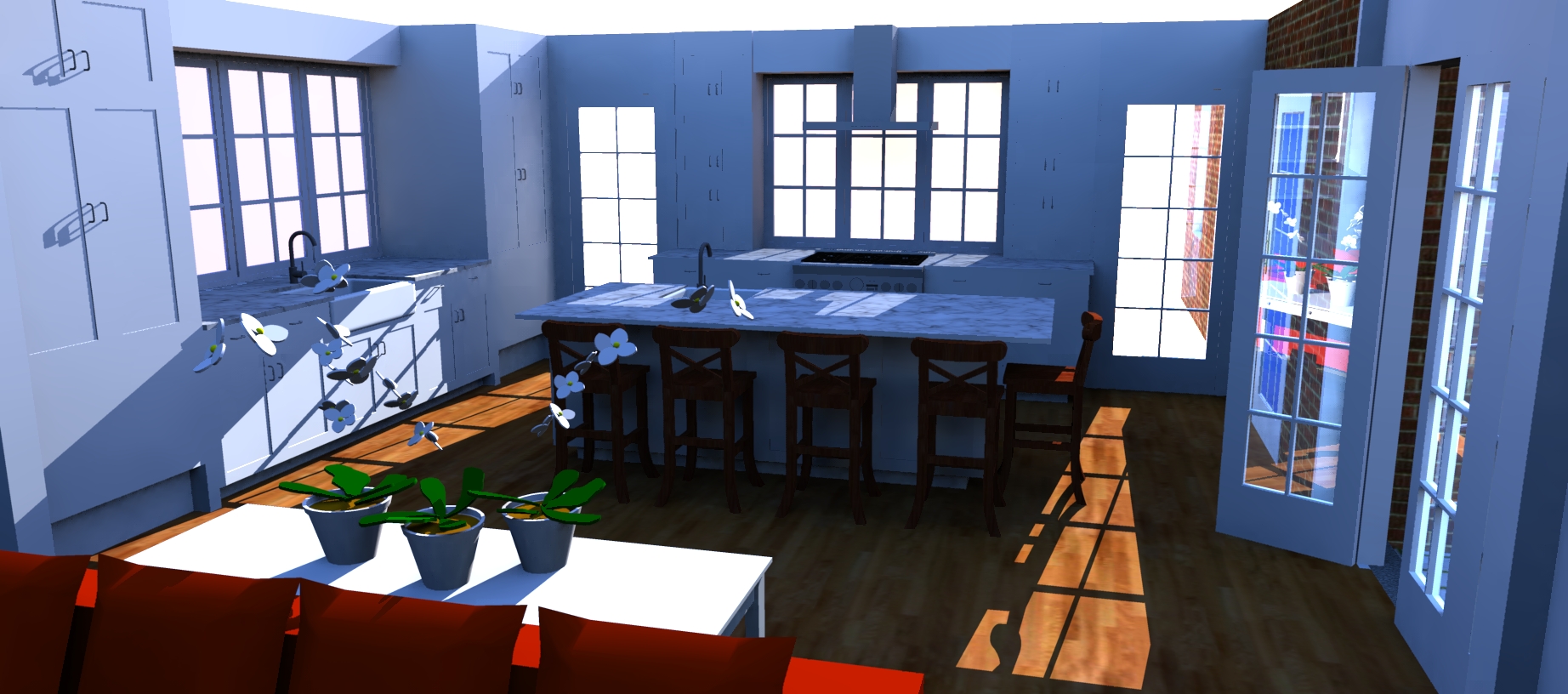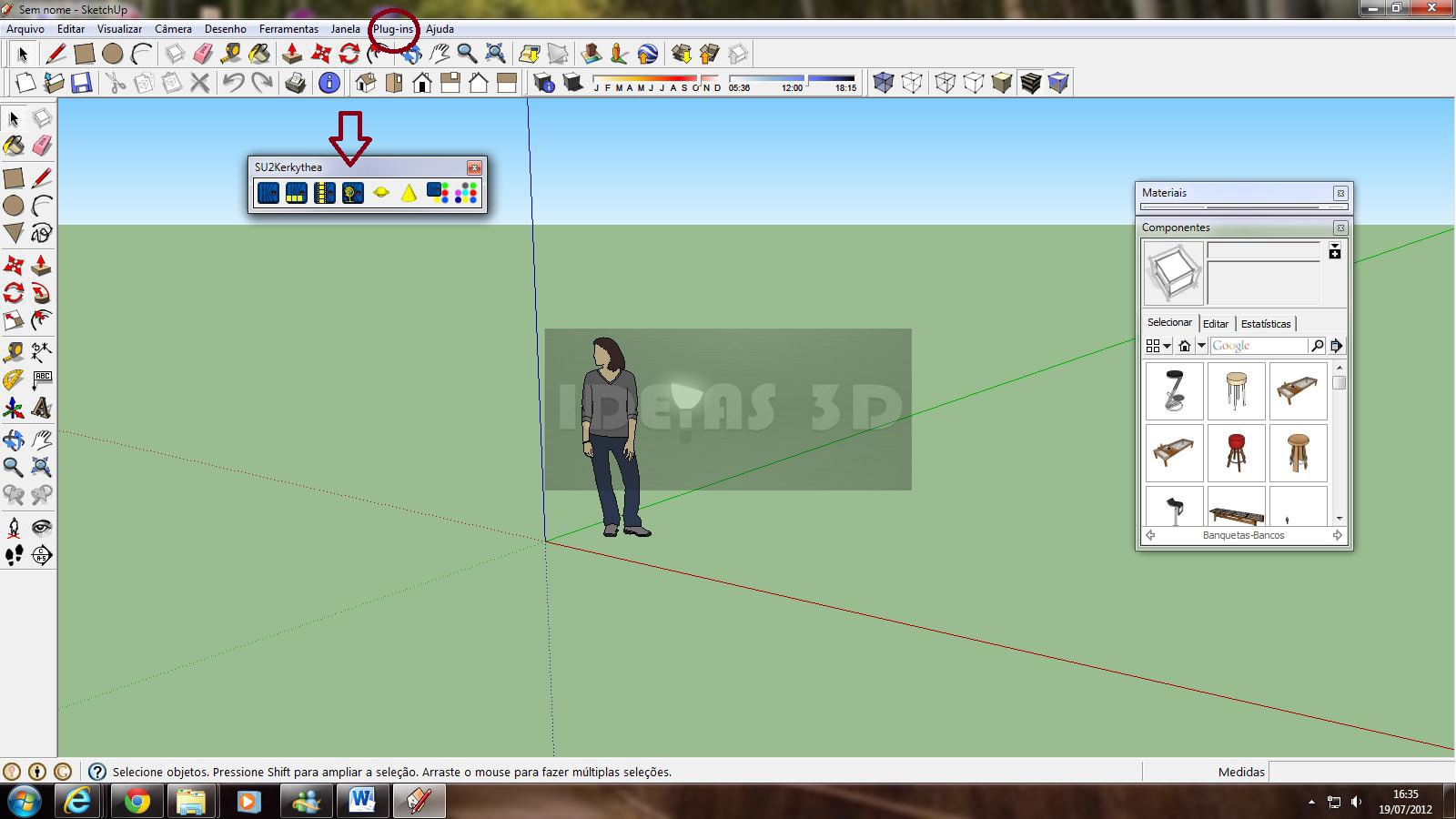If you are a student/former student majoring in architecture or architect wanna be, you might be familiar with the word “V-Ray”. Yes, V-Ray is one of the render engines (more accurately referred to as a numerical simulation software for simulating realistic natural lighting) which is very popular and favorite for most 3D architectural visualization artist.

Kerkythea is a standalone renderer, using physically accurate materials and lights, aiming for the best quality rendering in the most efficient timeframe. The target of Kerkythea is to simplify the task of quality rendering by providing the necessary tools to automate scene setup, such as staging using the GL real-time viewer, material editor, general/render settings editors, etc., under a. For this test render experiment, I will be using the following plugins for SketchUp, emphasizing the 3-D grass feature: (1) V-Ray 3.4- proxy grass, (2) Skatter plugin, (3) Kerkythea- Instacing, (4) 3D Tree Maker plugin, (5) Make Fur plugin. Installation – Placing Lights in Google SketchUp – Export Ok, let’s get started; first of all, be sure that you have installed the latest version of Kerkythea, and appropriate exporter (copy su2kt.rb and su2kt folder into SketchUp Plugings folder) for exporting your model to Kerkythea. Go back to the Kerkythea website and download the SketchUp Plugin from there. It’s a separate thing to the main Kerkythea program download that you appear to show. The plugin will download as a standalone.rbz file. But as Steve mentioned, you also need to install the main Kerkythea progam too.
But does any of you heard about Kerkythea? While Kerkythea is a render engine which less famous than V-Ray, it turns out that this rendering engine has a myriad of features and capabilities that are not inferior to V-Ray.
Want to know what are the pros of Kerkythea? Here we discuss some of the advantages and features found in Kerkythea, a rendering engine as good as V-Ray!

1. Kerkythea is a free rendering engine!
One of the words that often appeal to most of us, is the word “Free” or “Gratis”.
This is also applies to software and anything like it. People tend to like something that is “free”.
Thus as a free software, Kerkythea rendering engine has one important advantage when compared to its competitors . This is because this kind of sophisticated software is usually not free.
Chaos Group sets a price tag for V-Ray for Sketchup for around $ 600 USD! Of course they set such a high price for a reason.
Kerkythea Sketchup Plugin
As a rendering engine that has been recognized and becomes an industry standard, V-Ray has many advantages around its rich features such as Network rendering, Physical camera and lighting, section cuts, aerial perspective, and various other advantages.
This is certainly a very influential aspects in improving the performance for many architectural firms especially the larger architectural firms.

However, if you only need a some quite complete functions but do not include network rendering/rendering farm capabilities, Kerkythea is a smart choice since it is free and legal. Besides, the production quality of this rendering engine is very good.
2. Kerkythea Rendering System is a standalone software
Another advantage of Kerkythea is that it stands alone. Kerkythea rendering system is not a plugin. Kerkythea is a separate application.
In that way, when the user use it to render the images, they could still use their favorite 3D modeling softwares without necessarily wait for the rendering to complete.
Well, how does it work?
If you are a SketchUp user, first you must download the Kerkythea plugin and install it on your SketchUp.
After you finished the modeling phase, the model was then exported to Kerkythea using the plugin. The result is a file with a .xml (Extensive Markup Language) extension which is quite small file.
Then, you can open the file in Kerkythea renderer, determine the material that will be applied to each section of the model, set the camera view, set the renderer and simply render the scene after everything’s ready.
3. It runs in Windows, MacOS, even Linux flawlessly!
It seems, this is one of the most important features. Generally all of we are familiar with Windows, and some users familiar with MacOS as well. So, downloading and installing Kerkythea on Windows and MacOS is a piece of cake.
To my amazement, it turns out that this also applies to Kerkythea which is being ported to Linux.
Users who want to use Kerkythea on Linux, just need to download the Kerkythea binary archive on the web provider, do the extraction process and just use it!

It’s simple and easy. No complicated installation procedure at all! Cool, huh? 🙂
I use Deepin Linux as an operating system that runs in my Xiaomi Mi Air 12.5in laptop. Deepin itself is Ubuntu derived distro which has a clean and minimalist look, as well as easy and intuitive to use in terms of UX.
Thus, for Linux users who are also a SketchUp users, there is no reason to not have access to this high quality rendering engine which can run on linux.
4. Quite complete render setting and material browser
You will be amazed at Kerkythea’s quite advanced rendering setting.
Kerkythea has 6 (six) Global Illumination (GI) Methods, including: Photon Mapping (Indirect), Photon Mapping (Direct + Indirect), Photon Mapping + Final Gathering (SW), Photon Mapping + Final Gathering (GPU), Diffuse Interreflection , and Path Tracing.
In addition to these settings, there are also other settings such as Anti Aliasing (AA), and stop criterions (sort of boundary condition, a term often used in numerical simulation software). The “stop criterion” setting, among others, set the maximum number of photon reflections and brightness of the light.
Well, that are some advantages of Kerkythea as a rendering engines as good as V-Ray. Are you still curious? You can try it here!
If you think this information is useful, don’t forget to Share! 🙂
Thanks for reading!
If you are interested, here are some further reading materials discussing 3D visualization and rendering techniques:
Unreal Engine 4 for Design Visualization: Developing Stunning Interactive Visualizations, Animations, and Renderings
Unreal Engine was first created for gaming, but it has gone viral amongst multiple non-game communities that are blown away by its capabilities for real-time interactive visualization. However, Unreal Engine 4 (UE4) visualization for architecture, science, and engineering requires skills that most users don’t have, and is based on very different assumptions from videogaming.
Digital Lighting and Rendering
Kerkythea Plugin Sketchup 2019
Learn the fine art and craft of digital lighting and rendering from an experienced pro whose lighting work you’ve seen in blockbuster films such as Monsters University, Toy Story 3, Up, WALL-E, Ratatouille, and The Incredibles. Jeremy Birn draws on his wealth of industry and teaching experience to provide a thoroughly updated edition of what has become the standard guide to digital lighting and rendering.
